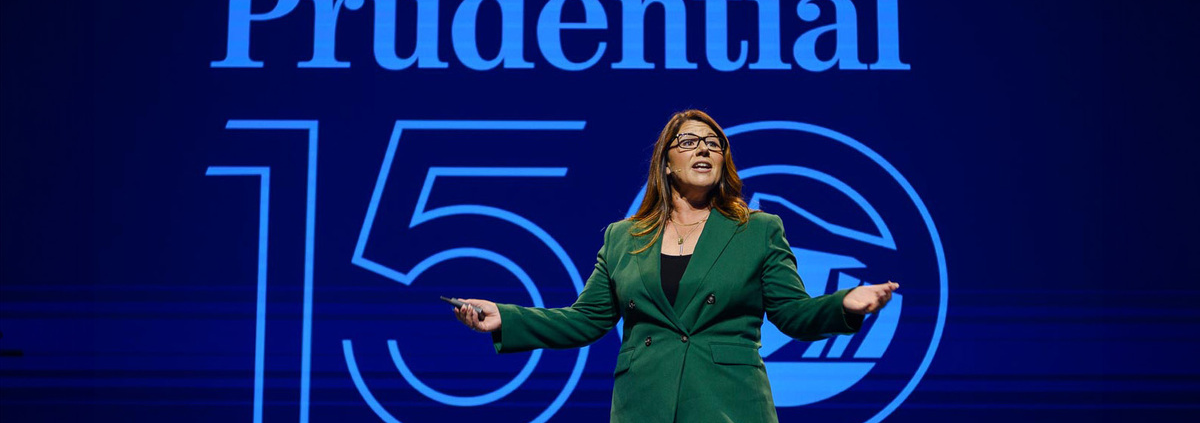Exclusive: How Prudential is using AI for faster, smarter content creation – itbrief.com.au
For a 150-year-old financial institution, digital transformation is hard enough.
However, doing it in the age of generative AI – with creativity, compliance and speed all on the line – is a different level of pressure altogether.
Speaking to TechDay in a one-on-one interview at the Adobe Summit in Sydney, Bridget Esposito, Head of Brand Creative at Prudential Financial, offered an inside scoop into the company's own AI journey.
"Marketers are under a lot of pressure to create more, but also to achieve it at a faster deadline," Esposito said. "We had to figure out how to do more with less and still keep it at that higher quality."
Prudential's answer wasn't just technology. It was process reinvention – repeatedly breaking down and rebuilding workflows, with brand governance and ethical guardrails at the core.
"We created a small AI Ethics Council that decided: here's what we're okay with, here's what we're not," Esposito said.
"This is where we'll move fast. This is where legal needs more time. Legal being part of the council made it easier to make decisions quickly. There's so much grey area in AI."
To win over internal stakeholders – especially in compliance-heavy environments – the team started with "low-end, low-risk" AI use cases.
These avoided customer data but delivered visible results: automating tedious creative production work, speeding up buy-in cycles, and freeing up human bandwidth for bigger strategic ideas.
"For us, AI is taking up the lower-funnel work we don't want to do – executing campaigns across all the different sizes and formats," Esposito said. "It's helping us get to that first draft 70% faster — for both writing and image generation. That's huge for creatives. We can show what it's going to look like, get buy-in, and start executing."
But speed wasn't the only prize. Creative quality – and brand trust – remained non-negotiable. That meant constant iteration.
"It's not a 'set-it-and-forget-it' approach," Esposito said. "AI changes so fast, we literally need to keep improving our processes every day. If something works, how do we make it better? If not, what went wrong and how do we fix it?"
One of Prudential's boldest AI initiatives is Flash Forward, a multi-sensory experience that ages users' photos and imagines their future retirement stories – generated by AI and fuelled by personal prompts.
Launched over a year ago, the platform faced immediate backlash.
"Prudential wanted to break boundaries of AI bias with conscious inclusion."
Instead of pulling the tool, Prudential doubled down on fixing it. A moderation layer was introduced. Human reviewers stepped in. The model was retrained – month after month.
To achieve this, the Flash Forward team adopted a three-pronged approach: AI vision models were used to generate more nuanced and inclusive text prompts; a custom iPad app allowed brand ambassadors to serve as human-in-the-loop moderators, reviewing or regenerating outputs in real time; and a built-in disclaimer transparently acknowledged the limitations and potential biases of AI.
"We started out moderating 85% of outputs. Now we're down to 15%," she said. "It's still learning. But we've invested the time and money to get it right – because that's how you build trust."
The next evolution? Generative video. "We're experimenting with letting people see themselves move and talk in the future," she said. "It might freak people out, but it might also be the most powerful storytelling we've ever done."
To prepare the organisation, Prudential is investing in creativity across the board – including training technical and finance staff in storytelling fundamentals.
"Storytelling is a really important tool that everybody has to upskill on," Esposito said.
"AI can hallucinate a story, but it often lacks empathy. People need to know what makes a good story – and how to improve it."
One campaign nearly derailed altogether. The company's 'Beta Babies' initiative – offering newborns investment accounts from day one – faced a major delay when its website components hit technical limits.
"We were pushing the components further than they were built for," Esposito said.
"It was going to take three months to rebuild. So instead, we broke down the process, found a new system, and figured out how to use what we had. We launched on time. That campaign showed us how important it is to be flexible and collaborative."
That collaboration now extends across creative, martech, and strategy – and it's cultural, not just operational.
"Breaking down silos takes a lot of warm hugs," Esposito joked. "It's about learning each other's language and dropping the ego. We're all swimming in the same pool – just with different strokes."
Even with six major events under her belt in what she called "self-serve July," Esposito is already looking ahead. Tools like Adobe Express and Firefly are reshaping how the brand empowers small teams to move fast, while generative video is on the horizon.
"I think the biggest risk isn't that AI goes too far," she said. "It's that brands move too slow. If you're not in the conversation, you're not in the answer. And if you're not in the answer, you're not relevant."








